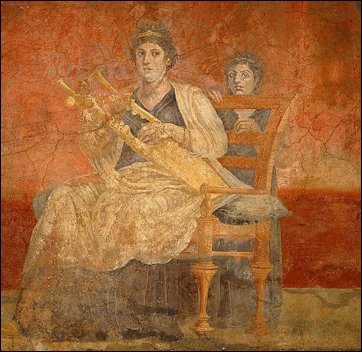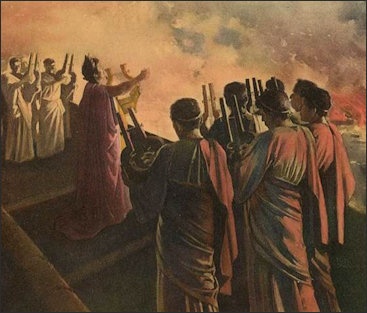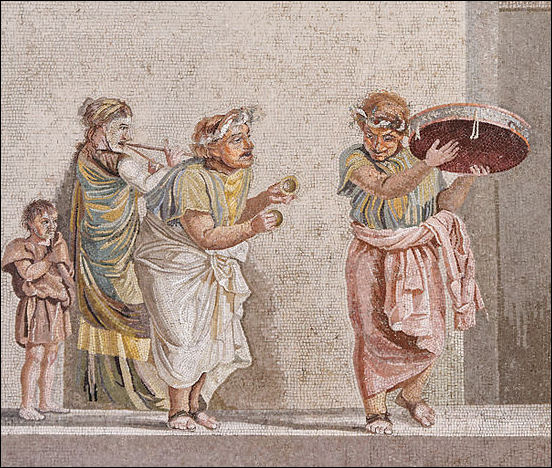Among the many artistic treasures preserved in Pompeii, one fresco stands out—a depiction of a woman seated gracefully, holding a lyre. Her serene expression and flowing garments suggest refinement and high social status. More than just a decorative piece, this artwork offers a glimpse into the cultural and artistic values of ancient Roman society.

The Lyre Player: A Muse of Art and Culture
The fresco features a woman elegantly holding a lyre, an instrument closely associated with Apollo and the Muses, symbolizing poetry, knowledge, and divine inspiration. Her detailed attire and posture suggest that she could be a patron of the arts or a representation of a muse herself.

Behind her, a young boy is depicted in quiet observation. He may be a student, an attendant, or a fellow musician, highlighting how music was deeply woven into education and daily life.
The Role of Music in Pompeii
Music played a vital role in Pompeian society, from private gatherings to public ceremonies. Wealthy households often employed musicians to perform at banquets, while street performers and theatrical productions also showcased musical talent. Some of the common instruments found in Pompeii include:
- Tibia (double flute): Used in religious ceremonies and processions.
- Tambourine: Popular in festivities and dance performances.
- Cymbals: Played in lively musical compositions.
These instruments weren’t just for entertainment; they also held religious and ceremonial significance, bridging the gap between daily life and the divine.

Frescoes as Symbols of Status
In Pompeii, frescoes were more than mere decoration—they were statements of wealth, education, and cultural sophistication. A fresco featuring music suggested that the homeowner valued artistic expression and sought to align themselves with the intellectual ideals of Greco-Roman culture.

The refined artistic techniques—subtle shading, lifelike details, and fluid movement—demonstrate the skill of Roman painters and the society’s appreciation for fine art.
A Window into the Past
Preserved beneath layers of volcanic ash for nearly 2,000 years, this fresco remains a testament to the vibrancy of ancient Pompeii. It offers a rare and intimate view of a world where art and music were integral to daily life, only to be frozen in time by the eruption of Mount Vesuvius in AD 79.
Conclusion
This Pompeii fresco is more than an artistic masterpiece—it is a historical document revealing the cultural and social landscape of ancient Rome. It reminds us that, despite the passage of centuries, music and art continue to be timeless expressions of human civilization.

